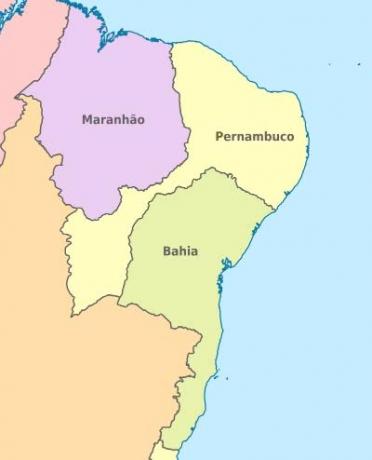The Berlin Wall fell one day November 9, 1989.
The fall of the Berlin Wall meant the end of the Cold War, the reunification of the two Germanys, the end of socialist regimes and the beginning of globalization.
Symbolically, it represents the victory of capitalism over socialism.
Its fall was possible due to international pressure, and the demonstrations registered in both Germanys.
The end of the Berlin Wall
Considered one of the main emblems of the Cold War, the Berlin Wall had been raised on August 13, 1961.
In 1989, 28 years after the split that gave rise to the two Germanys, protests erupted on both sides calling for the fall of the wall that divided Berlin.
Thus, on November 4, 1989, 1 million people took to the streets of East Berlin demanding reform.
On November 9, the TV news announced that the borders of East Berlin would be opened, but the problem was that no politician had said when this would happen.

However, this was enough for thousands of people to go to the border posts. That's why, on the night of that same day, more precisely at 11 pm, the wall begins to be knocked down by euphoric Berliners with sledgehammers, hammers and pickaxes.
At one of the border controls, called "Bornholmer Strasse", the pressure is such that the gates are opened and the population begins to cross the borders.
On the other side, in West Berlin, Berliners from the GDR (German Democratic Republic) are greeted with parties, hugs and beer.
Origin of the Fall of the Berlin Wall
The first steps towards rapprochement between West and East Germany were taken in 1973, when both countries rekindled their diplomatic ties.
Later, in 1980, the German Democratic Republic allowed its citizens to visit the western side, upon payment of a fee and presentation of documents.

These changes were due to East Germany's dire financial situation and the country borrowed from its traditional ally, the Soviet Union. However, this time, the USSR itself was going through a delicate economic moment due to spending on armaments and the Afghan War and could not help its ally.
So East Germany beckons to Westerners. These offer financial credit, but condition it on respect for human rights and concrete gestures such as the release of prisoners.
In 1987, US President Ronald Reagan visits Berlin, where he asks Soviet leader Gorbachev to tear down the Wall.
Consequences of the fall of the Berlin Wall
After the fall of the Berlin Wall, East German leaders said they did not intend to unify the two nations. This union was also not welcomed by France and England, as Germany would once again be the largest and most powerful country in Europe.
However, the reunification of Germany was already a process underway in the streets and in political offices, and it took place about a year after the fall of the wall in October 1990.
At that time, the economic differences between the western and the capitalist part, the eastern and the socialist one were very big. The GDR was impoverished and needed western public resources to reach the same level as the western side.
This reintegration process continues to this day, through the construction of infrastructure, job creation and tax incentives.
The process of the end of East Germany spread throughout the communist bloc and all the countries of Eastern Europe changed their political regime. These changes even reached the USSR and, in 1991, the end of the Soviet Union.
The Berlin Wall and Leaks to West Germany
The purpose of building the Berlin Wall was to prevent the flight of inhabitants from the German Democratic Republic (socialist) to the Federal Republic of Germany (capitalist).
In the year of 1961, when it was built, about a thousand people moved daily to the capitalist side. The most common means of escape were tunnels, crossing between buildings juxtaposed to the wall, in cars that pierced the blockades or across the river.

An estimated 75,000 people were charged with desertion for trying to flee, of which 18,300 were convicted and imprisoned.
Even after the Wall was built, many people evaded the border. However, in 1989, Hungarians opened their borders with Austria, allowing more than 60,000 people, especially East Germans, to cross their territories into West Germany.
Berlin Wall deaths
More than 100 people are believed to have died trying to cross the Berlin Wall. The first person to be killed by soldiers trying to cross the wall was tailor Günter Litfin, who was shot on 24 August 1961, eleven days after the barrier was built.
On August 17, 1962, the most publicized death occurs, when the bricklayer Peter Fechter is shot and dies in front of the TV cameras. However, the most dramatic deaths occur in the year 1966, when two children aged 10 and 13 are shot and died.
Consequently, on March 8, 1989, engineer Winfried Freudenberg falls with his gas balloon, being the last person to perish when trying to cross the wall.
See too: Cold War Questions
Bibliographic references
POMERANZ, Lenina - The fall of the Berlin Wall. reflections twenty years later. USP Magazine, São Paulo, n.84, p. 14-23, December/February 2009-2010



